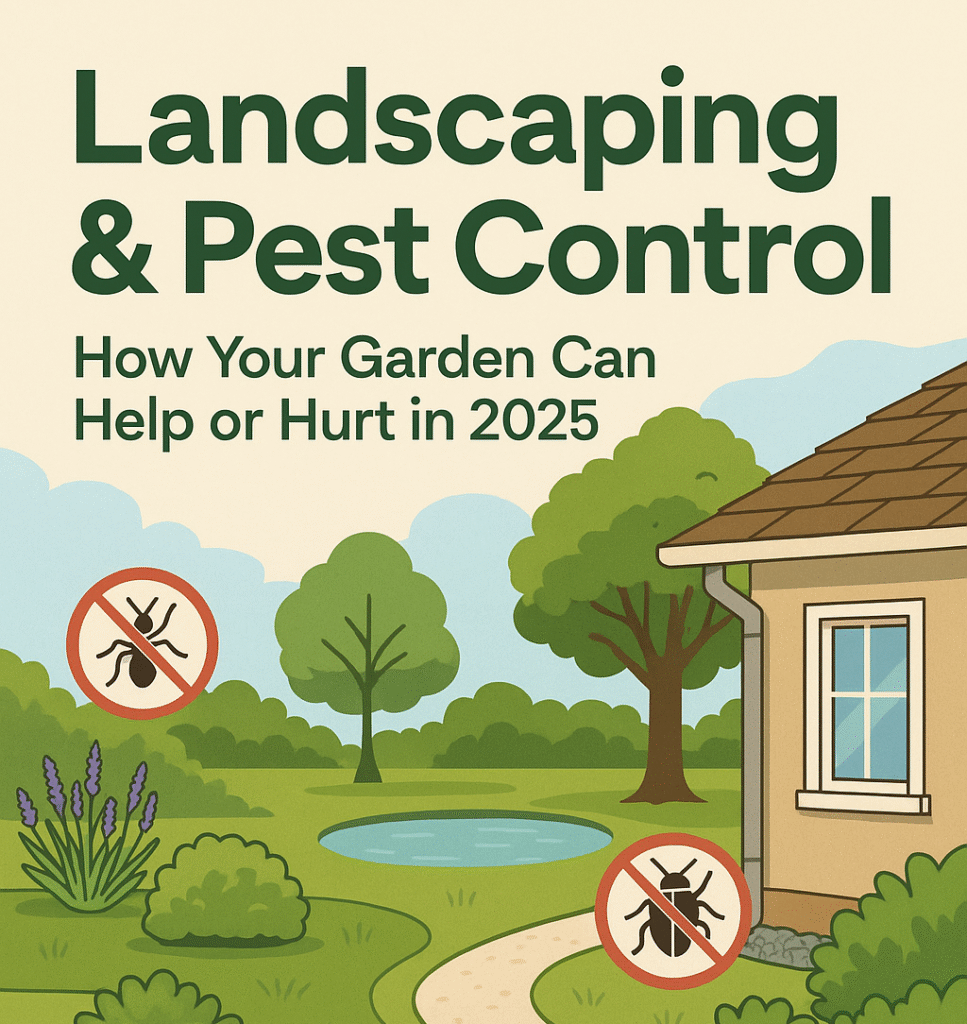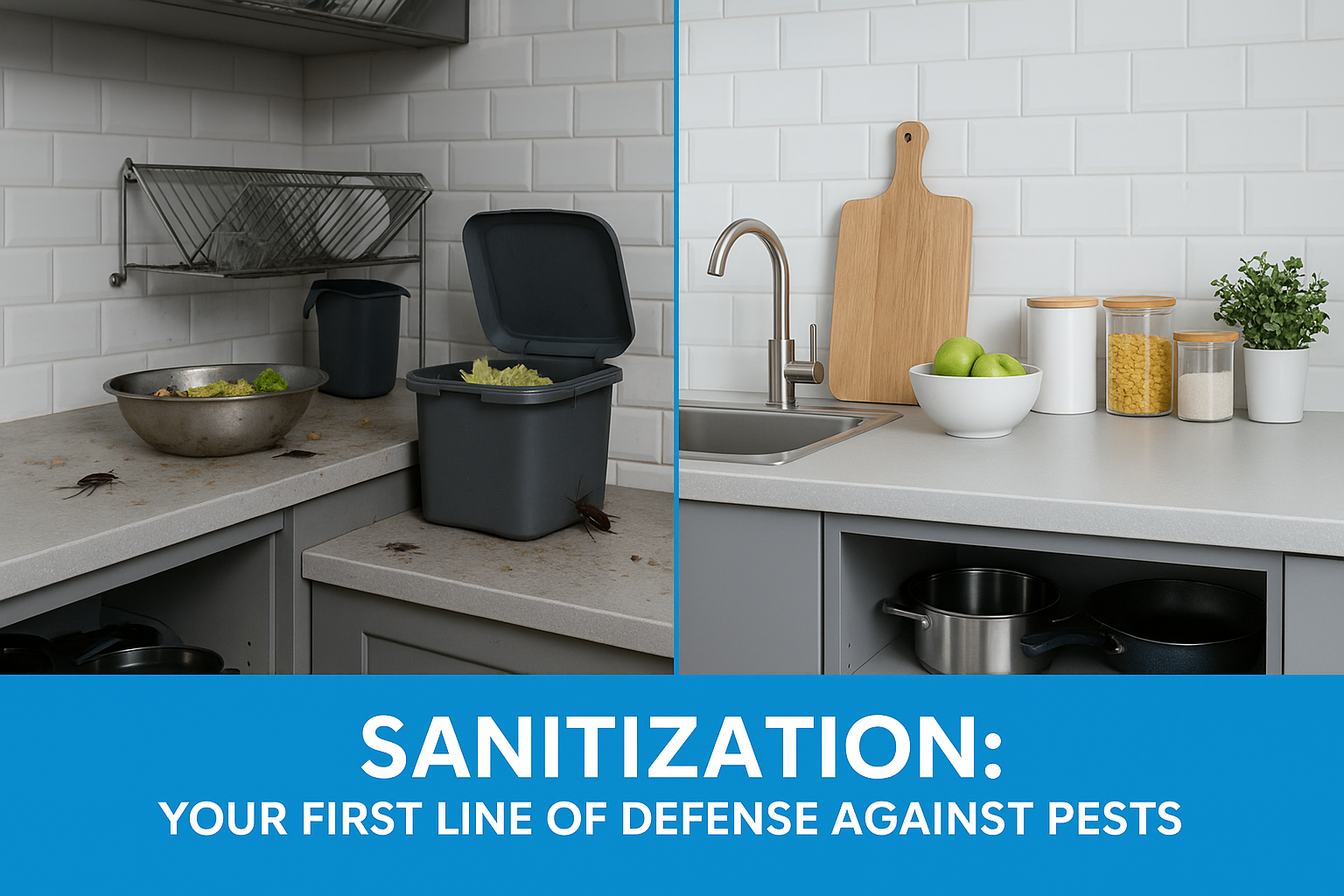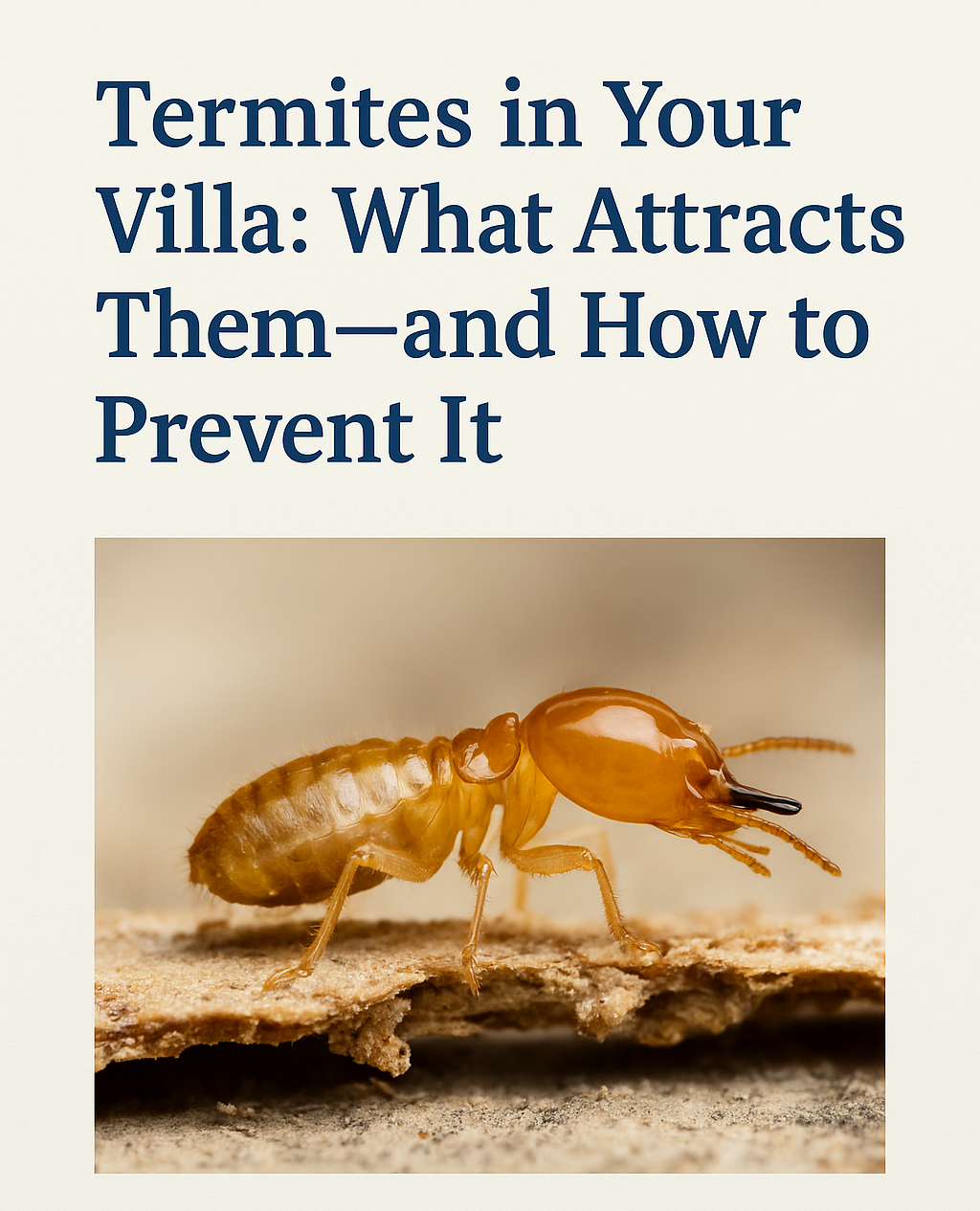The Role of Sanitization in Effective Pest Prevention (DUPLICATE)
- Pest_Control

Landscaping is often associated with beautifying outdoor spaces, increasing property value, and creating relaxing environments. However, what many homeowners in the UAE may not realize is that landscaping can significantly impact their pest control outcomes — for better or worse.
As pest activity becomes increasingly linked to climate and urban growth in 2025, understanding the relationship between your landscaping choices and pest management strategies is more crucial than ever. Let’s explore how your outdoor design could be protecting your home — or inviting trouble
How Landscaping Helps Pest Control
- Strategic Plant Placement Prevents Infestations
Landscaping done thoughtfully can create a natural barrier against pests. By keeping plants and trees at a safe distance from your home, you reduce the chances of ants, rodents, or termites using them as highways to enter the property. - Native Plants Support a Balanced Ecosystem
Opting for native UAE flora in your landscaping encourages beneficial insects like ladybugs and spiders, which prey on common pests. This natural control method reduces the need for chemical interventions, making your outdoor space healthier for both humans and pets. - Proper Drainage Deters Mosquitoes
Good landscaping prevents water from pooling in low areas, which helps keep mosquitoes at bay. Mosquitoes breed in stagnant water, so well-graded lawns, French drains, and rain gardens can drastically reduce their numbers. - Mulching the Right Way
Using mulch can regulate soil temperature and prevent weed growth. But when done correctly — keeping it away from the home’s foundation — it also prevents pests like termites from gaining entry into buildings. - Regular Maintenance Keeps Pests in Check
A clean, regularly maintained yard minimizes pest hiding spots. Landscaping that includes trimming overgrown bushes, mowing regularly, and removing debris can limit harborage areas for rodents and insects.
When Landscaping Backfires on Pest Control
- Overwatering Attracts Pests
Too much water creates soggy conditions that attract ants, mosquitoes, fungus gnats, and even termites. Automated irrigation systems should be calibrated to deliver just the right amount of moisture to your landscaping. - Dense Vegetation Provides Pest Shelter
Thick shrubs and ivy-covered walls may look lush, but they provide ideal hiding spots for rodents, snakes, and cockroaches. Landscaping should balance beauty with visibility to discourage unwanted guests. - Mulch Too Close to the Home
While mulch has many benefits, placing it too close to your home’s foundation can create moist, dark conditions that termites and ants love. Maintain at least a 12-inch gap between mulch and exterior walls. - Fruit Trees Invite Unwanted Guests
Landscaping with fruit trees adds charm, but fallen, overripe fruit attracts ants, rodents, and flies. Regular cleanup is essential to keep your yard from turning into a buffet for pests. - Outdoor Lighting Can Draw Bugs
Bright landscape lighting can attract flying insects, which in turn bring predators like spiders or bats. Consider using yellow or LED bug-resistant bulbs and directing lights downward to reduce attraction.
Landscaping Tips to Support Pest Control in 2025
- Choose pest-resistant plants: Certain herbs and flowers like lavender, citronella, rosemary, and marigold are natural pest repellents.
- Install gravel barriers: Gravel borders between your lawn and foundation help discourage crawling insects.
- Avoid wood-to-ground contact: Ensure decks, fences, and trellises are treated and not in direct contact with soil.
- Work with professionals: Collaborate with pest control and landscaping experts to create an integrated plan that considers both aesthetics and safety.
Why Landscaping Matters More in the UAE
In hot and arid environments like the UAE, landscaping serves more than just visual appeal. It influences water retention, provides shade, and plays a big role in deterring desert pests like scorpions, ants, and snakes. With extreme temperatures pushing pests to seek shelter indoors, a well-managed landscape can serve as your first line of defense.
At Blue diamond, we understand the delicate balance between a beautiful landscape and a pest-free environment. Our pest control solutions are tailored to fit with your outdoor design so that you can enjoy your garden without the worry.
Final Thoughts
Landscaping, when done right, is a powerful ally in pest control. But if ignored or poorly planned, it can just as easily undermine your efforts. As you plan your next outdoor project, remember that each tree planted, shrub trimmed, and light installed plays a role in your property’s defense against pests.
Don’t leave it to chance. Combine your landscaping vision with a comprehensive pest management plan to keep your outdoor and indoor spaces safe, functional, and stunning — all year round.
Need a professional touch?
Don’t wait until pests take over—stay one step ahead with Blue Diamond’s pest control.



Frequently Asked Questions (FAQ)
Can landscaping alone keep pests away from my home?
While proper landscaping can significantly reduce pest activity, it is not a complete solution. Landscaping should be combined with professional pest control for the most effective protection.
Which plants are best for natural pest control in the UAE?
Plants like lavender, citronella, rosemary, basil, and marigolds naturally repel many insects. Native plants also attract beneficial predators like ladybugs and birds, which help control pest populations.
How does overwatering affect pest presence?
Excess moisture creates ideal conditions for pests such as mosquitoes, termites, and ants. It’s important to manage irrigation schedules and avoid water accumulation in landscaping.
Should I avoid mulch completely to reduce pests?
Not necessarily. Mulch is beneficial, but it should be applied correctly — keep it at least 12 inches away from your home’s foundation to prevent attracting pests like termites and ants.
Can gravel or stone borders help with pest control?
Yes, using gravel or stone barriers between your foundation and plants helps prevent crawling insects from easily accessing your building.
Share this
Book Your
Service In
30 Seconds
- 30 years of experinece
- Served 40,000+ clients across UAE
- Dubai Municipality Approved
- Eco - friendly products safe for All
- Cost Effective
- 24/7 Customer support
Check out our Recent Blogs
The Role of Sanitization in Effective Pest Prevention
Sanitization is the first line of defense when it comes to effective pest prevention. Whether you live in a villa,...
Rodent Control in the City: Tips for Urban Living
Rodent control is a serious issue that affects almost every major city around the world—and Dubai is no exception. With...



